Bangladesh finally committed to eliminating child labour. But can we actually do it?
Bangladesh has for long resisted the signing of the Convention, but eventually gave in to pressure from global partners. It is understood that the country ratified the Convention especially to pave its way to availing the European Union's GSP+ privilege
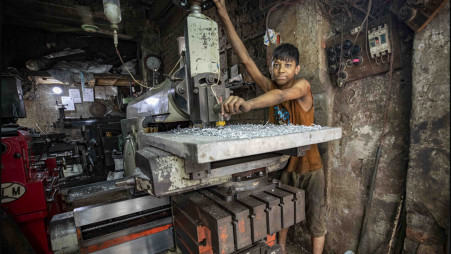
The deafening noise coming from the shoe-moulding machine intensified as we walked into the factory in Lalbagh, Dhaka. Molten, black rubber was escaping from the vents in black fumes. It was also producing sweltering heat in the factory. The molten rubber smelled like synthetic smog. We had to hold our breath to keep the stench and the toxic fumes out of our systems.
Our guide, Rahat (15), told us there are many other children like himself working on the second storey of the factory. We looked up, surprised, to find there was another floor crammed inside. A little boy of around 12 years clambered down a steep ladder with ease, while we faced difficulty climbing up. That was our cue to go see for ourselves what was going on.
At least eight other children like Rahat were hard at work; some were assembling the shoes, some glueing them up and some were sorting them into sizes and orders. Teenage girls were working alongside as well. The boys were working shirtless due to the heat. The heat for the girls was more severe as they had to stay fully covered. They went on about their work like drones; their shoulders drooped with fatigue but they went on, as they had a target to meet.
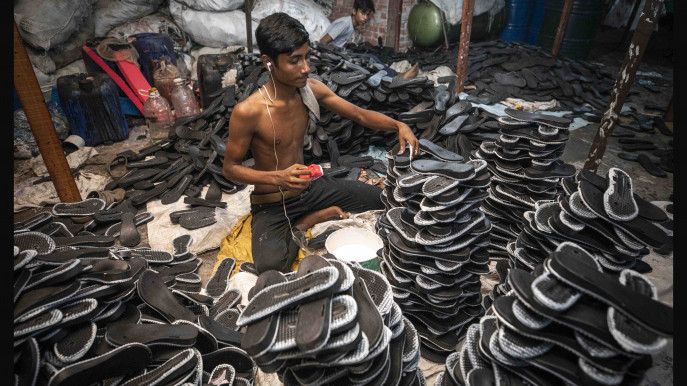
Then we discovered that Rahat's own younger brother too worked at the factory. His name is Saiful, yet another 12 year old child working in this horrid factory. The setting will remind you that Charles Dickens' novels were based on real life circumstances in the Victorian Era, where children like Saiful worked in similarly haphazard places, except that was some 200 years ago.
Saiful's hands were covered to the forearm in brick coloured dye. Mixing the dye with glue, he shared his story with us.
Saiful had studied briefly in the past. The enjoyment or privilege of education are still not lost on him. He would have loved to leave all this behind and go back to studying – only if his impoverished life had allowed him to. But his hands are tied; or dyed.
"My family was hit the hardest in the lockdown. My elder brother (Rahat) used to work here. Then I had to join to back him up in supporting our family financially. My father works on a field back in Bikrampur. My elder brother too had to quit his studies to make ends meet," said Saiful, switching his gaze between the shoes in his lap and us.
On our way out of the factory, we met the factory owner Mohammad Rasel. He said, "These children walk up to us looking for work. I take them in. They would not do these voluntarily unless they were going through serious financial hardship."
Rasel, however, added that if these children, cheap labour for him, were to go back to studying, his business would suffer.
Drenched in bright and broad daylight from the outside, the edifice looked like the inside of a coal mine, covered in soot and exhausted sighs of many children like Saiful, who have worked here and those that will. The cycle of suffering for the Saifuls only resurfaces from time to time but never stops. Poverty traps them in an ever twisting maze.
According to the National Child Labour Survey 2013 by Bangladesh Bureau of Statistics (BBS), there are 17 lakh child workers in the country, of which 12 lakh are engaged in hazardous forms of labour.
Ratification of the Minimum Age Convention, 1973
The Government of Bangladesh, on 22 March 2022, deposited with the ILO the instrument of ratification of the Minimum Age Convention, 1973, becoming the 174th ILO Member State to ratify this Convention. This Convention requires states "to pursue a national policy designed to ensure the effective abolition of child labour and to raise progressively the minimum age for admission to employment or work."
Bangladesh's labour laws allow 'adolescents' aged 14–18 to work in factories under some set conditions but limits the number of work hours to a maximum of seven hours a day. For instance, it allows adolescents to work with machines if they have been fully instructed about the dangers and have received sufficient training. The law also allows children aged 12-14 to work in establishments if it is not hazardous to their health and does not hamper their schooling.
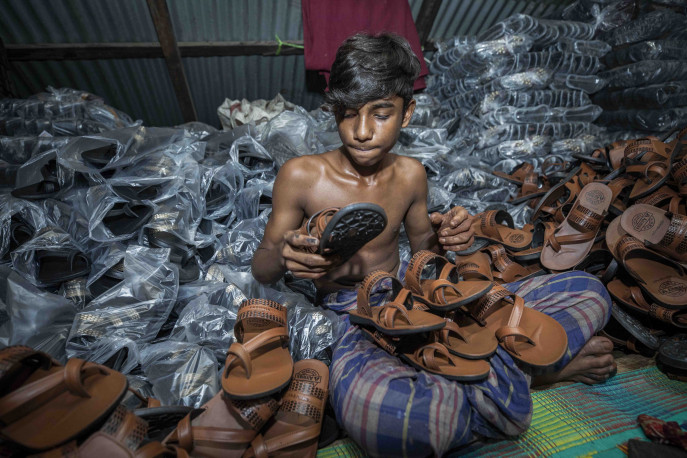
Ratification of the Convention means Bangladesh is now committed to protecting children from work for which they are too young and from work that jeopardises their health, morals or psychological well being, as well as their access to education.
Bangladesh has for long resisted the signing of the Convention, but eventually gave in to pressure from global partners. It is understood that the country ratified the Convention especially to pave its way to availing the European Union's GSP+ privilege.
GSP+ scheme grants full removal of tariffs on over 66% of EU tariff lines for 'vulnerable developing countries.'
The pull factor in child labour
Child labour is not, in all cases, attributable to ultra poverty. There are lower-medium-income families, deprived of institutional education for generations, who simply do not see what value education would add to their children's ability to earn money.
These families, at the first sight of inattentiveness of their children to study, send them to work as apprentices, for a miniscule salary. When they grow older, these parents often try and send their sons abroad. This model actually works for many, at least in terms of integrating their offspring in economic activity.
Apart from the typical push factors in the child labour senario, i.e. ultra poverty, there is a pull factor as well.
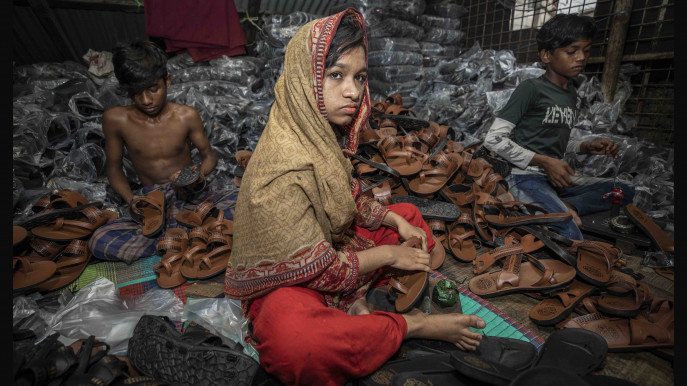
Tahmina Haque, the headmaster of Kalikaprosad-1 Government Primary School, Bhairab, Kishoreganj, shared her experience of handling working children of her school's catchment area. Bhairab is renowned for the burgeoning local shoe industry.
"Before every Ramadan, shoe factory owners, some even from Dhaka, take away our students to employ them in their factories, as the pressure of production heightens ahead of Eid. As the labour shortage intensifies in this season, they even pay in advance, and they pay up to Tk20,000, a handsome salary considering what child workers usually get," the headmaster told The Business Standard.
Some of these students never return to school, as their demand as workers rises once they master the skills necessary for the industry, not necessarily limited to shoe-making.
"I myself have fetched some of my students from the factories around the school and made them attend the classes, but it is not always easy to retain them," Tahmina added.
The government pays primary school students a stipend of Tk150 per month. Even the lowest wage for a child worker far outweighs the lure of the stipend, culminating in the failure to keep them in school.
A widened social safety net?
For the next fiscal year (2022-2023), a total of Tk1,13,576 crore budgetary allocation for social safety net programmes has been proposed.
A child worker usually earns Tk700 to Tk1,000 per week, or Tk3,000-4,000 every month.
Combinedly, 17 lakh child workers earn up to Tk8,160 crore per year for their families. Close to a billion US dollars. Albeit difficult, theoretically, this does not seem to be impossible for the government to compensate the families for not sending their children to work.
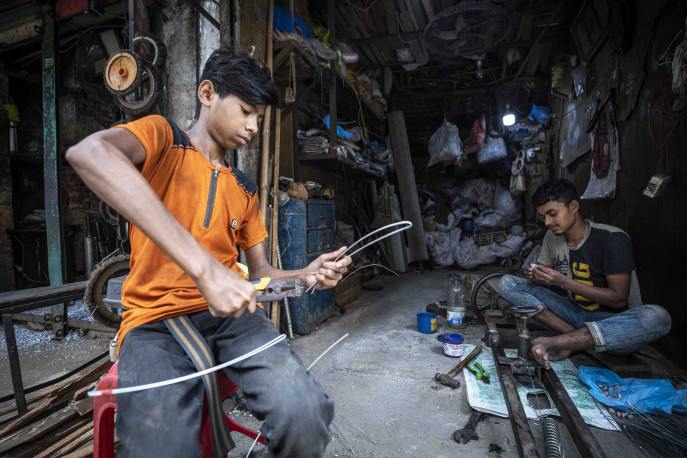
The compensation might seem logical because if the 'zero duty' access to the EU is discontinued three years after the LDC graduation, the exports of Bangladesh to the EU, the single largest destination of Bangladeshi exports (worth $18.7 billion), would face 8.7 per cent duty on average, potentially meaning a drop of shipment at the rate of 5.7% per year, according to Dr Khondaker Golam Moazzem, Research Director, Centre for Policy Dialogue (CPD), as pointed out in a joint opinion piece titled "Can Bangladesh get prepared for EU's GSP-plus?" published in GSP Hub, a publication of the EU.
There is, however, a big problem in this simplified calculation regarding the compensation. Whenever the government is set to acquire a huge amount of land for mega projects, we have seen people start constructing new facilities, mainly houses - pucca and semi pucca - with a view to securing a larger compensation against the acquisition. Compensating the families for not sending their children to work might actually encourage more families to do exactly that.
A 'development issue'
Against the backdrop detailed in the upper section of this write-up, Bangladesh's ratification of the Minimum Age Convention has naturally warranted a question: can the country implement it?
If fact, Bangladesh has, under pressure from the western buyers, eliminated child labour from the readymade garments industry.
However, one can argue that it was easier because RMG is a formal employment sector, and the buyers' constant advocacy and monitoring played a decisive role in stopping child labour in there. It will not be easy in informal sectors.
The same way unfit vehicles and vessels ply the roads and waterways in the country, or footpaths are occupied by illegal installations through "managing" a whole network of public representative and government officials, child labour can continue in those sectors. Unless, of course, the underlying pull and push factors are addressed.
"Child labour in a country like Bangladesh is primarily a development issue, not so much enforcement, " Rizwanul Islam, Former Special Advisor, Employment Sector, International Labour Office, Geneva, told TBS in a recent interview.
"We have to start by asking why children work. Basically, people who send their children to work do so because they need the money earned by them. We need to address such issues rather than trying to eliminate child labour by adopting a legal approach," he added.



 Keep updated, follow The Business Standard's Google news channel
Keep updated, follow The Business Standard's Google news channel
















